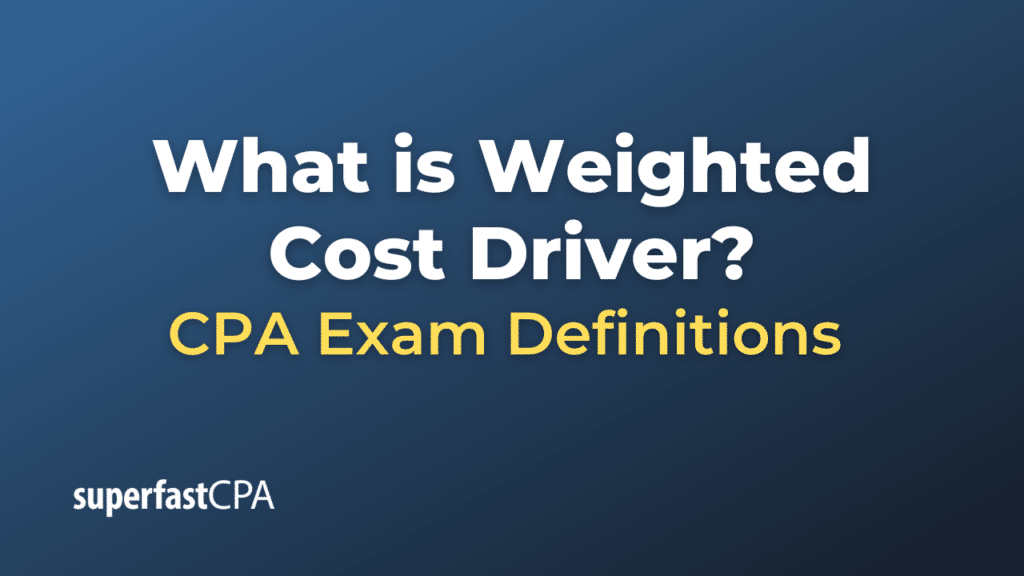Weighted Cost Driver
In cost accounting and management accounting, a cost driver is a factor that influences or contributes to the expense of certain business operations. A “weighted cost driver” takes this concept a step further by assigning weights to different cost drivers based on their relative importance in causing the cost.
The use of weighted cost drivers can provide a more accurate and nuanced understanding of costs. For example, let’s say a manufacturing process has multiple cost drivers such as machine hours, labor hours, and material usage. Each of these drivers contributes to the total cost, but not necessarily equally. By assigning weights to each cost driver, a company can allocate costs more accurately to different products, services, or departments.
Formula:
The weighted cost could be calculated as follows:
Weighted Cost = (Weight for Machine Hours × Cost per Machine Hour) + (Weight for Labor Hours × Cost per Labor Hour) + (Weight for Material Usage × Cost per Unit of Material)
Using weighted cost drivers is particularly useful for more complex organizations or processes where costs are influenced by multiple factors. It allows for more precise cost allocation and can lead to better strategic decisions.
Example of Weighted Cost Driver
Let’s walk through a hypothetical example to illustrate the concept of weighted cost drivers.
Imagine a small manufacturing company that produces widgets. The company has identified three main cost drivers:
- Machine hours
- Labor hours
- Material usage
After an analysis, they decide to assign the following weights to these drivers:
- Machine hours: 50%
- Labor hours: 30%
- Material usage: 20%
Cost Information:
- Cost per machine hour: $20
- Cost per labor hour: $15
- Cost per unit of material: $5
Activity Information:
For a specific batch of widgets, the company has the following activity:
- Machine hours used: 10 hours
- Labor hours used: 8 hours
- Material units used: 100 units
Calculating the Weighted Cost:
To calculate the weighted cost for producing this specific batch of widgets, you’d use the formula:
Weighted Cost = (Weight for Machine Hours × Cost per Machine Hour) + (Weight for Labor Hours × Cost per Labor Hour) + (Weight for Material Usage × Cost per Unit of Material)
Plugging in the numbers:
- Weighted cost from machine hours = 0.5 x (10 hours x $20/hour) = $100
- Weighted cost from labor hours = 0.3 x (8 hours x $15/hour) = $36
- Weighted cost from material usage = 0.2 x (100 units x $5/unit) = $100
Adding them all together:
Weighted Cost = $100 (machine) + $36 (labor) + $100 (material) = $236
So, the weighted cost of producing this specific batch of widgets would be $236 according to the weighted cost drivers the company has identified.
This weighted cost allocation allows for a more nuanced understanding of how different activities contribute to the total cost, thereby aiding in more informed decision-making.












